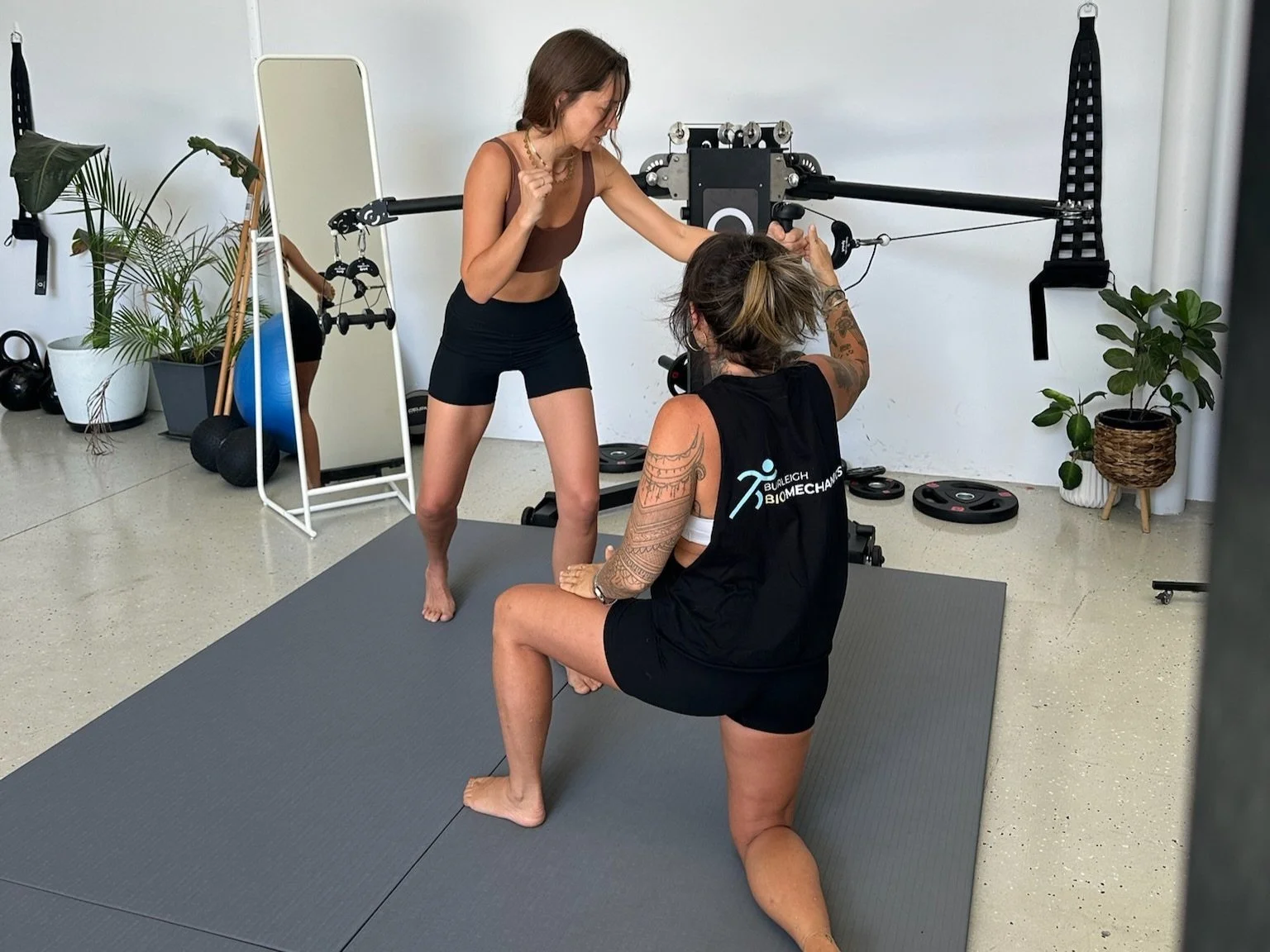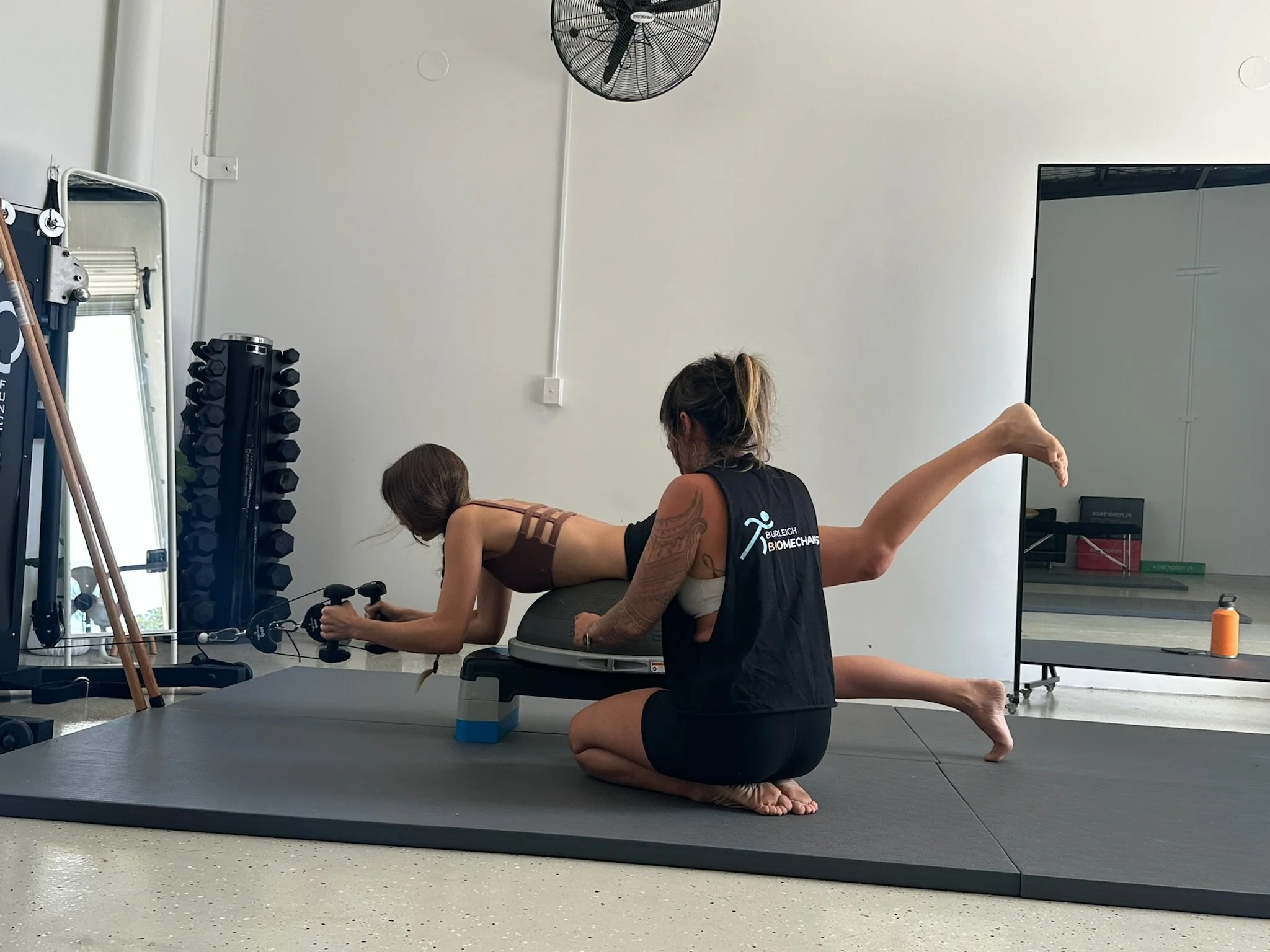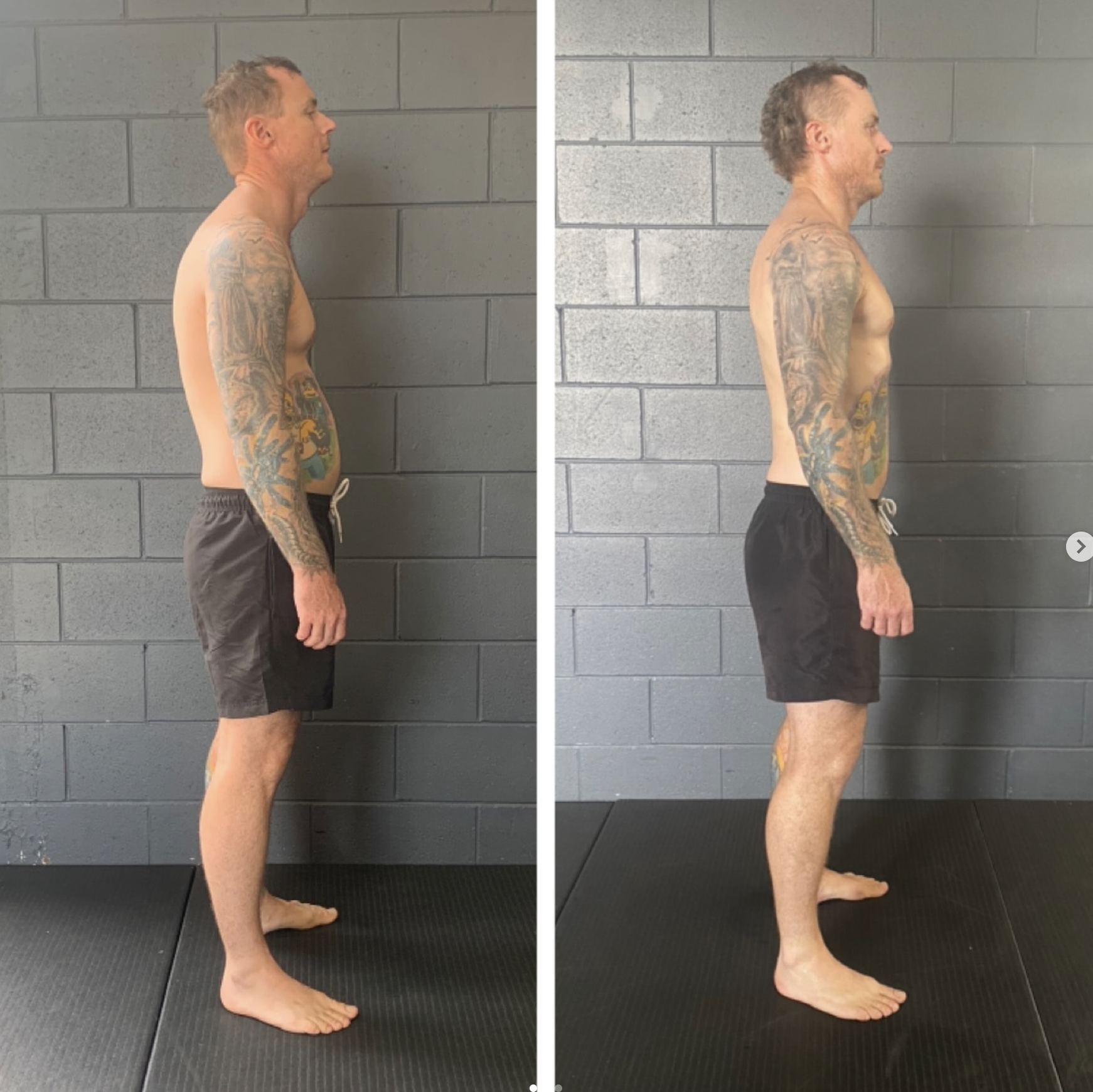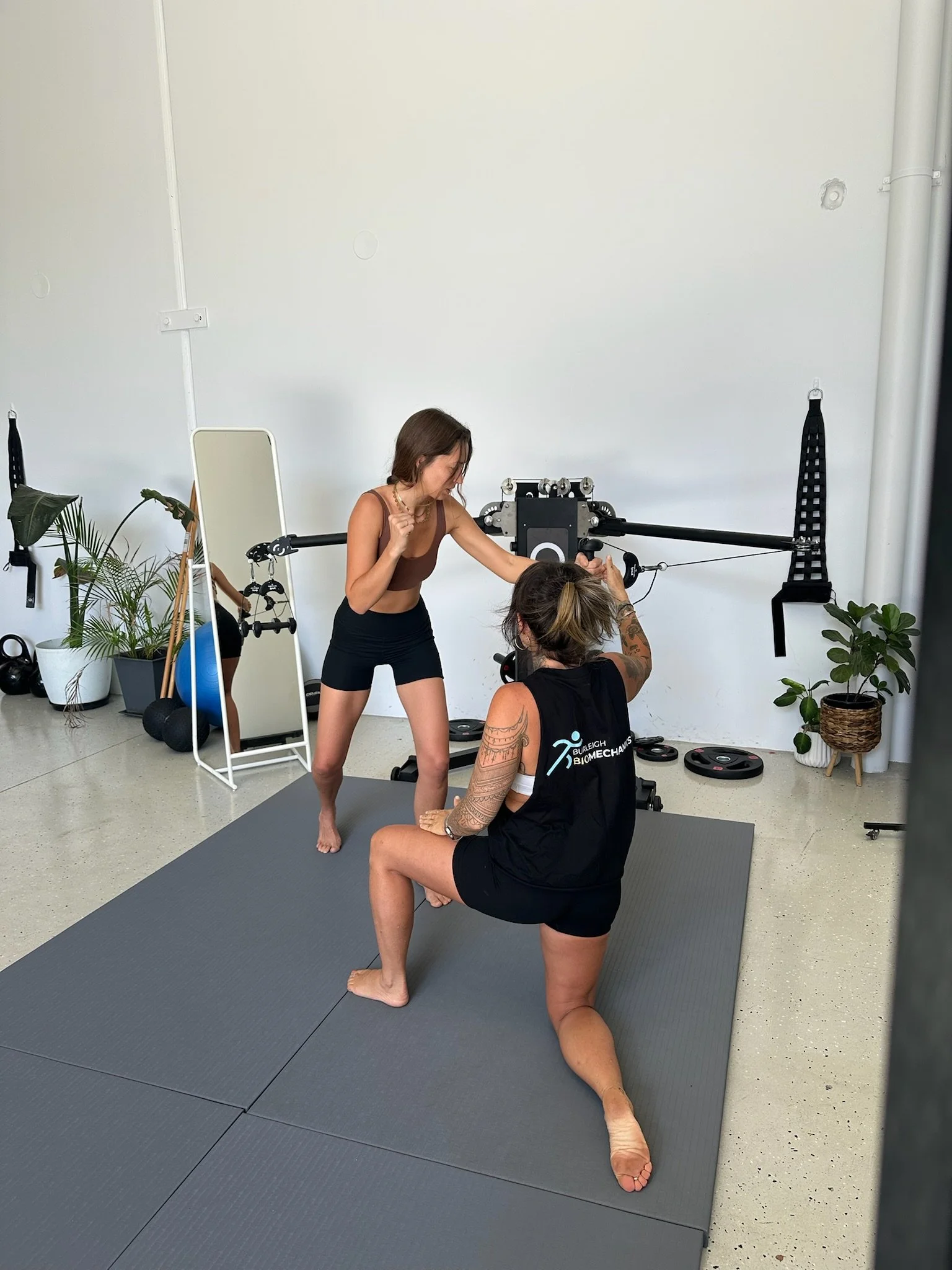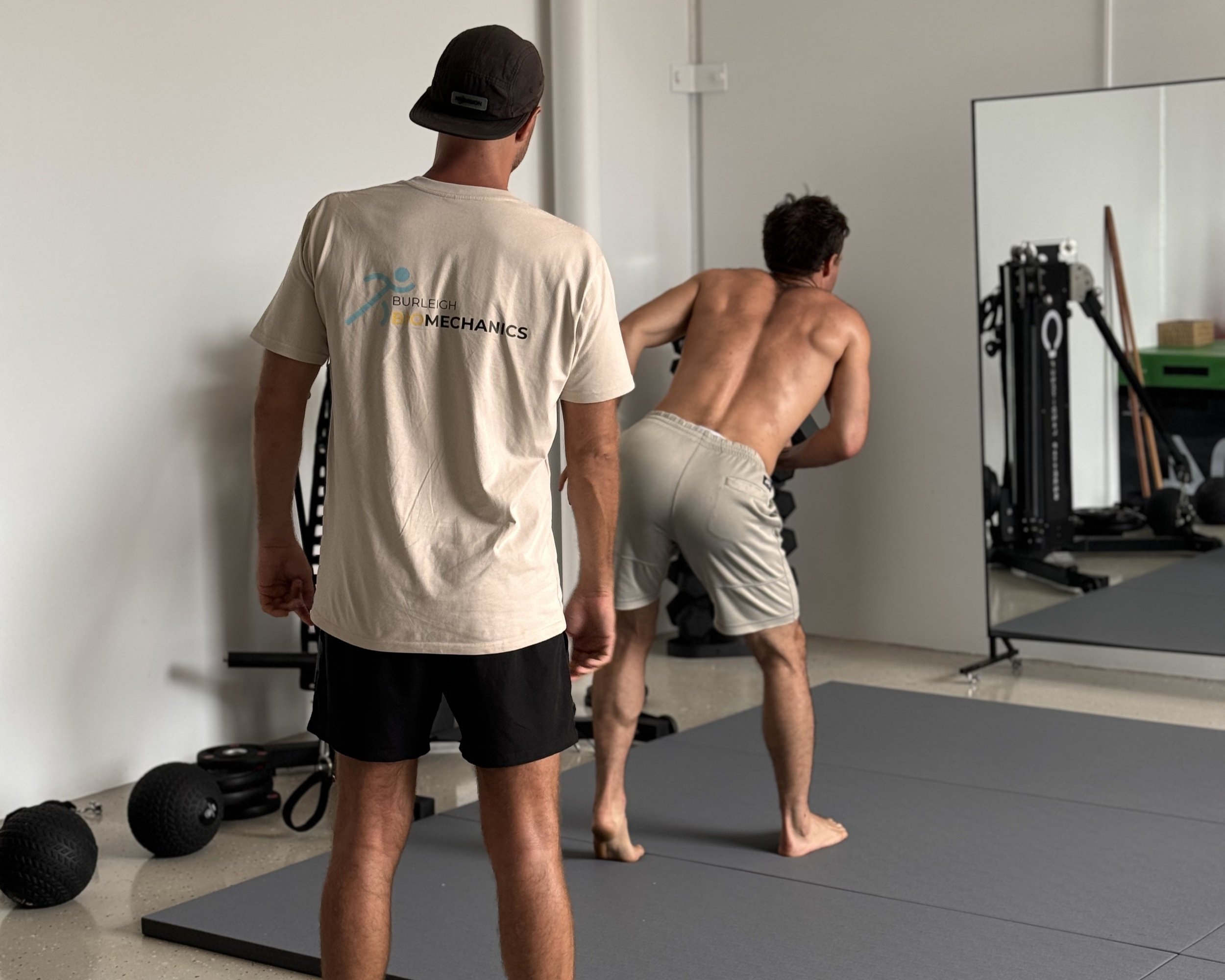
Targeted assessment and functional movement training for joint hypermobility in the hips, shoulders, legs, knees, and neck. Serving Burleigh Heads and the Gold Coast.
Hypermobility Treatment & Therapy on the Gold Coast
What Is Hypermobility?
Hypermobility means your joints move beyond a normal range of motion. While joint flexibility can be an advantage for dancers, athletes, and yogis, it becomes a problem when your body lacks the control to stabilize those joints under load.
At Burleigh Biomechanics, we specialize in hypermobility therapy that strengthens coordination across the entire body — not just isolated joints. Our approach blends mobility exercises, posture correction, and gait retraining to restore control without reducing your natural flexibility.
Common Hypermobility Symptoms
You may benefit from hypermobility treatment if you experience:
Recurrent joint sprains, “giving way,” or instability
Muscle tension that never releases, especially after stretching
Hip pain, clicking, or hip instability during walking or standing
Hypermobility in shoulders — fatigue, subluxation, or pinching overhead
Hypermobility of the knee — locking, popping, or poor alignment
Hypermobility of the neck — headaches, stiffness, or dizziness
Hypermobility in legs or toes — cramps, clawing, or fatigue when walking
Poor posture, chronic tension, or difficulty building strength despite training
These symptoms signal your body is relying on ligaments instead of muscles for stability. Our hypermobility exercises retrain your body to distribute force correctly through your structure.
Our Approach to Hypermobility Therapy
1. Whole-Body Assessment
We assess posture, gait, and joint mechanics to find where instability originates. Video analysis reveals compensation patterns that traditional physio often misses.
2. Corrective Movement Programming
You’ll learn exercises for joint hypermobility designed to strengthen deep stabilizers around the hips, shoulders, and spine. Each exercise improves joint flexibility with control.
3. Progressive Integration
We move from foundational drills to complex hypermobility workouts that build functional strength and coordination. This reduces strain on the ligaments while improving total-body efficiency.
Hypermobility by Area
Hip Hypermobility
Hip hypermobility can cause anterior tilt, hip pain, and reduced glute activation. We target hip joint issues with mobility exercises that integrate pelvic rotation and core stability for long-term relief.
Shoulder Hypermobility
If you experience slipping, fatigue, or pain with overhead movements, our hypermobility therapy retrains scapular control and shoulder mechanics.
Knee Hypermobility
Hypermobility of the knee can create locking, ITB tension, and poor force transfer. We restore control through tibial rotation and hip–knee alignment drills.
Neck Hypermobility
Hypermobility of the neck often leads to fatigue and headaches. We teach spinal stabilization and thoracic integration to improve posture and reduce tension.
Leg & Toe Hypermobility
Hypermobility in the legs and toes affects balance and gait. We retrain foot tripod strength and coordination to stabilize each step
Hypermobility and Exercise — How to Train Safely
If you’re hypermobile, not all exercise is helpful. Stretching or yoga can increase instability if you already have excessive range. Weight training without structural balance can overload joints.
Our hypermobility exercises teach your body how to move efficiently — combining mobility, stability, and load control in a single pattern. You’ll learn to:
Generate tension through the right muscles (not ligaments)
Maintain posture and alignment through motion
Build resilience in hips, knees, and shoulders without losing flexibility
Your First 3 Sessions
-
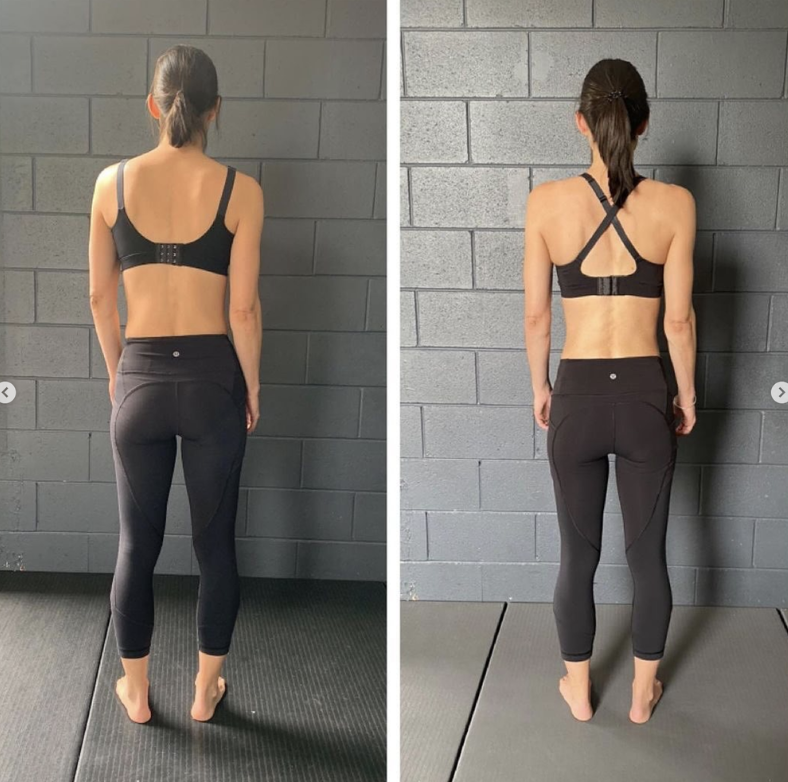
Session 1 – Assessment (90 minutes)
Posture, gait, and hypermobility testing. Identify your weakest stabilisers, imbalances and overcompensations.
-
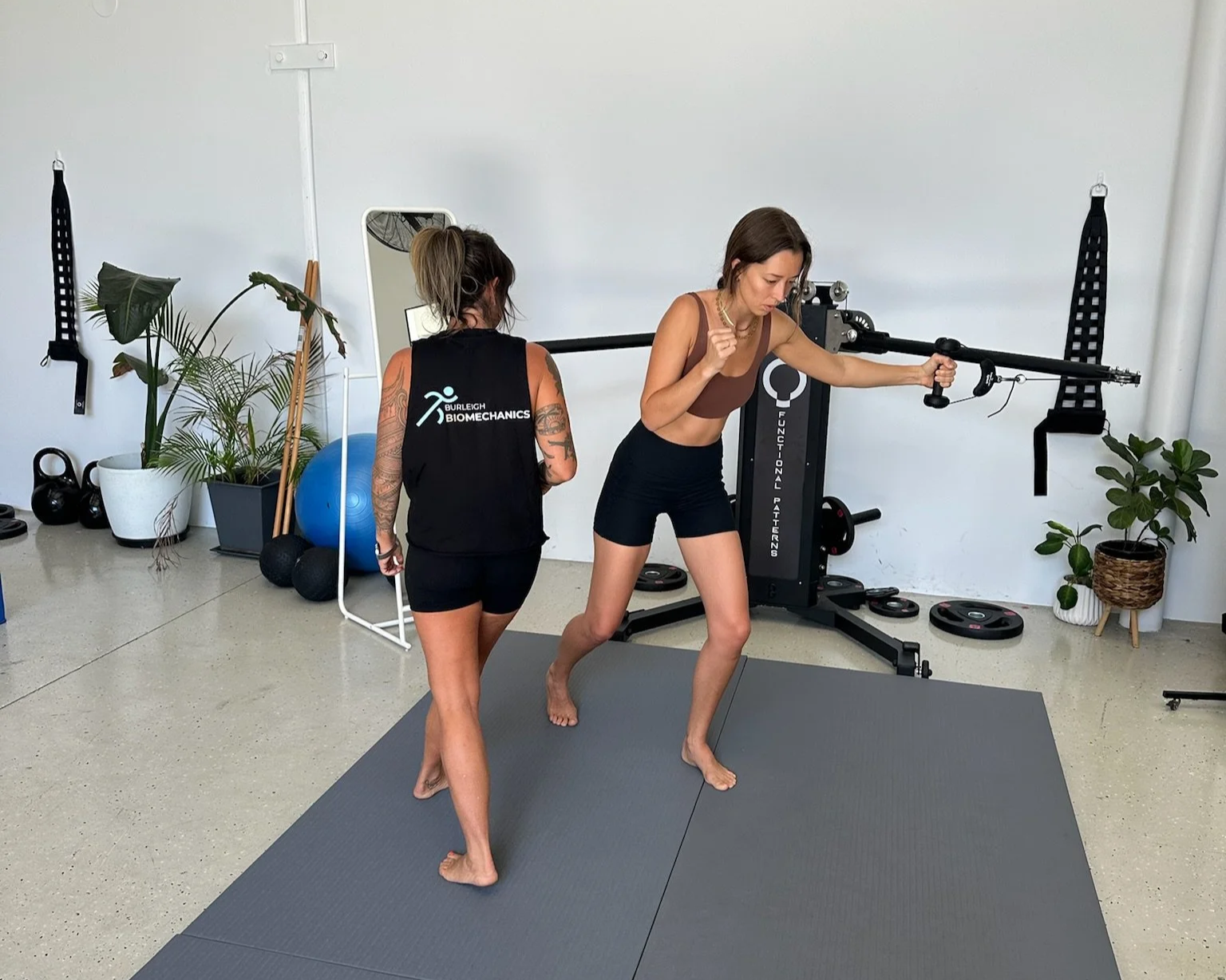
Session 2 – Movement Repatterning
Individualised mobility exercises to activate deep stabilisers in hips, knees, shoulders, and neck.
-
Session 3 – Functional Integration
Progressive hypermobility workouts to link strength through your core and limbs, improving total-body balance.
Physio in Burleigh vs Biomechanics – What’s the Difference?
Quick answer: Physio usually treats the injured area. Biomechanics treats the entire movement system to fix the cause of recurring problems.
Physio (Traditional)
Focus on pain or injury site
Short-term pain relief
Manual therapy & rehab exercises
Treats symptoms
Biomechanics (Burleigh Biomechanics)
Focus on whole-body movement patterns
Long-term root-cause correction
Myofascial release + corrective movement
Prevents re-injury by fixing mechanics
How Do Our Clients Feel?
-
My training with Jen has been very encouraging and educational. I have a large repertoire of exercises I can take home and integrate into my daily life. The other benefits which have been notable are nervous system regulation, improved sleep and no more hip and knee pain! Thank you Jen!
Adrianna, 5 Star Google Review
-
I am able to stand for long periods of time without feeling pain in my hips and lower back, which I haven’t been able to do for years. Functional Patterns has really helped me being able to complete daily activities without pain.
James, 5 Star Google Review
-
I was in constant pain prior to starting and had been for 5 years due to old accidents and bad posture. I'm still learning techniques at the moment but my pain has reduced considerably and I'm feeling less anxious as a result.
Joanna, 5 Star Google Review
Who We Work With
Dancers, yogis, and gym-goers struggling with recurring instability
Individuals with flexible hips but chronic hip or knee pain
Office workers with hypermobility in neck and shoulder tension
Teens and adults recently diagnosed with joint hypermobility or EDS spectrum symptoms
Results You Can Expect
Within the first few weeks, clients notice:
Improved posture and movement awareness
Reduced pain and clicking in hip joint issues and knees
Stronger, more controlled end ranges
Less fatigue during workouts or daily activity
How Do Our Clients Feel?
-
After a road traffic accident 2 years ago my body encountered a mix of injuries that occured within that time. I don't quite know where I would be if I hadn't found this high-quality, dependable and specialised approach. The education and training is completely impressive!.
Carey, 5 Star Google Review
-
Jen is a great mentor with a deep understanding of the body. It has helped me better understand my own body and scoliosis. I have been able to increase my strength and movement and reduce my back pain.
Hayley, 5 Star Google Review
-
Been training with Louis 6+ years and have seen massive improvements in my posture and gait cycle which has lead me to living pain-free from previous injuries such as shoulder pain, quad tears and bone impingement in my ankle. The attention to detail from the practitioners is unmatched
Luke, 5 Star Google Review
Book An Initial Appointment
Here’s What You’ll Get in Your First 90 Minutes
A full gait + posture assessment
We analyse how your body actually moves—not just where it hurts.Clear diagnosis of what’s driving your pain
You’ll leave knowing exactly which patterns are causing the problem.A personalised plan that actually holds
No generic exercises. Precise, FP-based sequencing matched to your body.Immediate hands-on corrections
We start improving muscle timing, rotation, and symmetry in session one.A roadmap for long-term change
Feel the difference now, and know the exact steps to keep improving.
Areas We Serve
We help clients from across the southern Gold Coast, including:
Burleigh Heads
Palm Beach QLD
Miami
Currumbin
Tallebudgera
If you’re searching for a Burleigh physio, Palm Beach physiotherapy, or even acupuncture in Burleigh, we’re right here on the border of Burleigh and Palm Beach.
Local Gold Coast Clinic
Our Burleigh Heads facility serves the wider Gold Coast, including Miami, Palm Beach, Mermaid Waters, Varsity Lakes, and Broadbeach.
We’re known for combining biomechanics, movement retraining, and functional integration to deliver sustainable results.
FAQs
Is hypermobility the same as flexibility?
Not exactly. Flexibility involves muscular range; hypermobility involves ligament laxity. You can be flexible without being hypermobile.
What’s the best exercise for hypermobility?
Exercises that build tension and control — not passive stretching. Our hypermobility exercises target stability through movement.
Can hypermobility cause pain?
Yes. Over time, instability stresses ligaments and joints, leading to pain and fatigue.
Can therapy fix hypermobility?
You can’t change ligament laxity, but with structured hypermobility therapy you can teach your muscles to control it.
Will I lose mobility if I get stronger?
No — the goal is controlled flexibility. We help you keep range while improving stability.
Ankle Sprains / ATFL Tears in Hypermobile Clients
We build muscular stiffness and controlled rotation so your joints stop folding under load.
Hip & Pelvis Instability
We stabilise the pelvis through glute integration, rib-cage stacking, and rotational timing—core pillars for hypermobility.
ITB & Knee Pain in Hypermobile Bodies
Your tissues can’t stabilise without the correct movement strategy. FP builds that strategy piece by piece.
Pubic Bone / Pelvic Pain
Restoring symmetrical rotation is key for hypermobile pelvises. We focus on controlled stability, not stretching.

